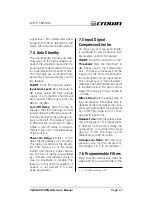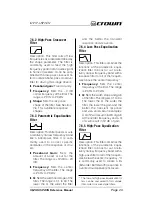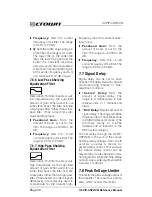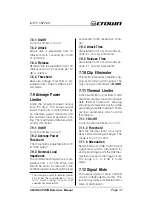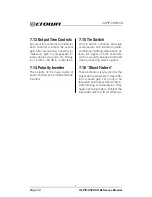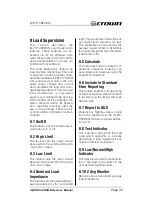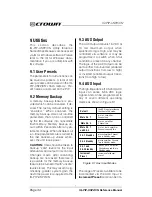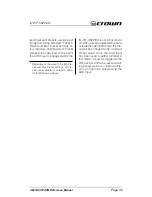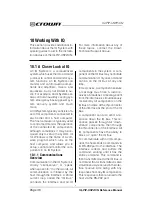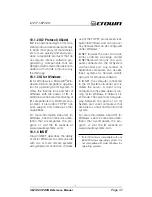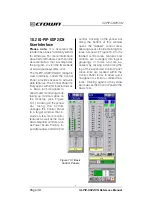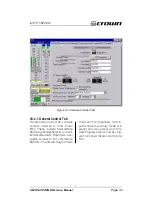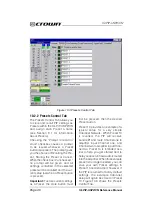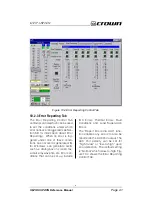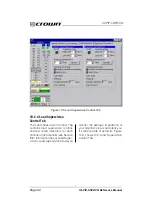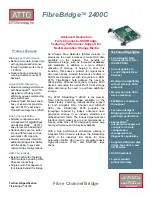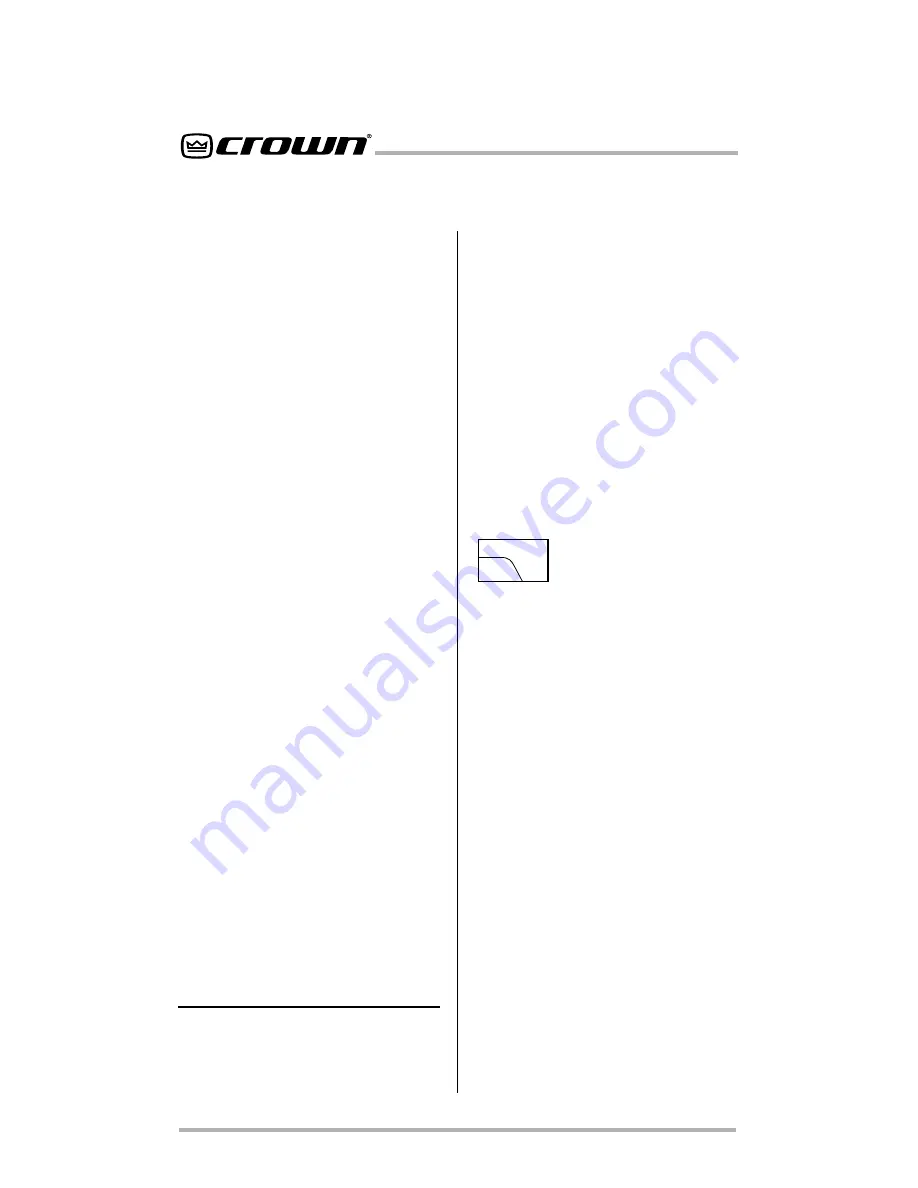
IQ-PIP-USP2/CN
Page 28
IQ-PIP-USP2/CN Reference Manual
* “Biquad” refers to the double quadratic
equations which mathematically de-
scribe each filter implemented in the
digital signal processor.
actual number depends on the mix
of filters chosen). There are seven
different filter types from which to
choose.
Low-Pass Crossover Filter
(1st–
4th order)
High-Pass Crossover Filter
(1st–
4th order)
Parametric Equalization Filter
(2nd
order only)
Low-Pass Equalization Filter
(2nd
order only)
High-Pass Equalization Filter
(2nd
order only)
Low-Pass Shelving Equalization
(1st order only)
High-Pass Shelving Equalization
(1st order only)
DSP filters can be processed pre or
post crossover, depending upon
which
form
the IQ-PIP-USP2/CN is
configured in (see the IQ for Win-
dows documentation for more infor-
mation about
forms
).
All filters have IIR based topologies
to insure a proper magnitude/phase
relationship for use in professional
audio applications such as equal-
izer or crossover (dividing) networks.
Each channel has a total of eight
“biquad” filter cells.*
All filters with adjustable Q-factors
can be set in fractions of an octave.
See Section 10.7 for information
about calculating Q-factors.
An indicator in the software shows
how much DSP resources are being
used by the selected filters. One
3rd- or 4th-order filter uses the
equivalent of two 1st- or 2nd-order
filters.
1st-, 2nd-, 3rd- and 4th-order re-
sponses result in 6-, 12-, 18- and 24-
dB/octave roll-offs, respectively.
A description and list of the param-
eters of each filter type are pre-
sented next:
7.6.1 Low-Pass Crossover
Filter
Description: This filter rolls off high
frequencies at a rate determined by
the shape parameter. The filter is
commonly used to feed the low fre-
quency portion of an audio signal to
woofers or subwoofers. It can be
combined with a high-pass cross-
over filter to create a band-pass
crossover filter for driving mid-range
drivers.
•
•
•
•
•
Passband gain:
Fixed at unity.
•
•
•
•
•
Frequency:
Sets the –3 dB
corner frequency of the filter. The
range is 20 Hz to 20 kHz.
•
•
•
•
•
Shape:
Sets the response
shape of the filter. Available
response shapes are:
1st-order Butterworth,
2nd-order Butterworth,
3rd-order Butterworth,
4th-order Butterworth,
2nd-order Bessel,
3rd-order Bessel,
4th-order Bessel and
4th-order Linkwitz-Riley.














